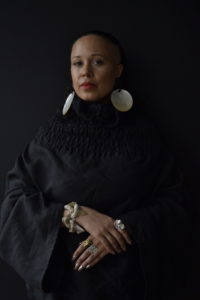What is called the imagination (from image, magi, magic, magician, etc.) is a practical vector from the soul. It stores all data, and can be called on to solve all our “problems.” The imagination is the projection of ourselves past our sense of ourselves as “things.” Imagination (image) is all possibility, because from the image, the initial circumscribed energy, any use (idea) is possible. And so begins that image’s use in the world. Possibility is what moves us.
—Amiri Baraka, “The Revolutionary Theatre”, Liberator, July 1965
Rachel Newman
Rachel Grace Newman is an art historian from Toronto, Canada with family roots in Jamaica. She specializes in art history of the colonial Caribbean and contemporary art practices of the Caribbean and African diasporas. In 2016, she received her Ph.D. from Stanford University, where her dissertation explored the depiction of Caribbean sugar plantations in the early nineteenth century. Her interest in colonial history has influenced her curatorial and art practice. In the spring of 2016, she curated a show at the Cantor Arts Center at Stanford University. Titled “Blood in the Sugar Bowl,” the show used eighteenth-century sugar bowls as an entry point to examine the colonial sugar trade. In Rapture, an artistic collaboration with her brother, uses large-scale, styled portraits and narrative photography to examine ancestral connections to geographic sites in a world impacted by the forced and voluntary migrations that took place under colonialism. Rachel is currently the A.W. Mellon Postdoctoral Fellow at the Center for Advanced Study in the Visual Arts at the National Gallery of Art in Washington, D.C. She recently accepted a position as Assistant Professor of Art History at the Tyler School of Art at Temple University.
A.W. Mellon Postdoctoral Fellow, CASVA, National Gallery of Art / Assistant Professor, Temple University
